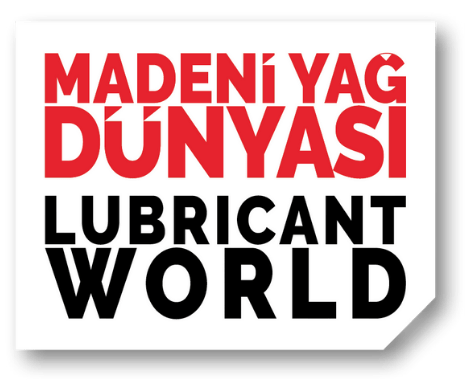Regulatory initiatives are driving major change in how industrial lubricants can maximize their protection of the natural environment. Here’s what you need to know.
All industries, in every part of the world, are continuously seeking to protect the environment. This is especially true in the industrial lubricants market, where whether via incorrect disposal, spillage or machine seepage, significant volumes of fluids are leaked into the environment each year. With this in mind, there is a good reason for all lubricant manufacturers to improve the eco-friendliness of their products so as to best protect the environment.
Increasing awareness at all levels about environmental protection has been paired with new regulatory and labeling stringency that demands fluids improve their biodegradability and other ecological traits. The convergence of these trends has created challenges for lubricant manufacturers—and new opportunity. Let’s take a look:
New Labeling Stringency
In recent years, the lubricants industry has seen increasing stringency of several widely recognized standards and labels that certify varying levels of eco-friendliness. These include:
The European (EU) EcoLabel, which certifies products with a guaranteed, independently verified low environmental impact. The label places limits on the amount of hazardous ingredients formulators can include in formulations, how biodegradable the formulation is, and whether it contains components that are persistent and bioaccumulative.
Blue Angel, the German Ecolabel, which the country awards to a wide variety of environmentally friendly products. Blue Angel is similar in stringency to the European EcoLabel, but places additional requirements on how to properly dispose of labeled formulations.
The U.S. Environmental Protection Agency’s (EPA) Vessel General Permit (VGP) will soon be replaced with the Vessel Incidental Discharge Act (VIDA), which establishes a framework for the regulation of discharges incidental to the normal operation of a vessel under a new Clean Water Act.
It is within the context of these labels and regulations that the industry is seeing significant growth potential for environmentally acceptable lubricants (EALs). EALs, as defined by the U.S. EPA, are fluid formulations that meet certain standards for biodegradability, non-bioaccumulative potential and minimal toxicity to aquatic life compared to conventional lubricants. Such formulations are required to meet the labeling criteria described above. According to research from Kline & Company, demand for biolubricant products is forecast to grow at a CAGR of 5.4% in the coming years.
Defining Environmental Friendliness
As demand for EALs becomes more prominent, it is useful to define how they are situated within the broader context of sustainability. A product may be developed from more sustainable raw materials than another, but may not meet certain biodegradability expectations.
With this in mind, one effective methodology to establish the baseline sustainability of a product is to evaluate its overall effect on the environment throughout its entire life cycle, from cradle to grave. This accounts for the product’s impact while in use, and the steps taken and resources used leading up to its creation and its eventual disposal. This approach accounts for the entire history of the product. Calculating such figures is known as a life cycle analysis, which offers a fuller picture of a product’s overall impact.
Within this context, we can better understand industrial lubricants’ impact. EALs, for example, are held to explicit standards. They must be biodegradable—meaning they have the capacity to be decomposed by microorganisms over time into simpler by-products, carbon dioxide and water. They must maintain minimal toxicity to aquatic organisms according to tests defined by the Organization for Economic Cooperation and Development (OECD) and EPA test guidelines. And they must maintain minimal bioaccumulative potential, or the inability to cause chemical buildup within the tissues of an organism over time.
By way of comparison, bio-based lubricants—which have also seen increased adoption in recent years, driven by environmental concerns—are frequently made from natural oils, avoiding the use of petroleum-based oils in their formulations. However, biolubricants need only be made from natural oils to be labeled as such. They do not need to meet explicit criteria for biodegradability, toxicity and bioaccumulation. This means a biolubricant may still incorporate an additive component that is not biodegradable.
For industrial fluids, these characteristics matter. Consider the agricultural industry alone—lost lubricant from woodcutting equipment leads to the release of approximately 10,000 tons of chain lubricants into the environment per year, according to an estimate from administrators of the Blue Angel label. Indeed, the final part of any industrial fluid’s life cycle may very well occur within the natural environment, and their ability to minimize harm to delicate ecosystems is critical.
Maintaining Performance
While environmental friendliness is critical, EALs must also maintain their fundamental ability to protect industrial equipment. This is the core function of any lubricant—compromise is unacceptable.
However, maintaining the same essential performance characteristics as traditional lubricants can be a true formulation challenge for EALs. This is because many of the most reliable classes of additive chemistries so common in traditional lubricants do not meet biodegradability, toxicity and bioaccumulative potential characteristics necessary of an EAL.
For example, zinc dialkyl dithiophosphates (ZDDPs) are one of the most widely used classes of wear protection additives in industrial lubricants, but because they do not meet biodegradability standards, they must be excluded from an EAL formulation. These same restrictions impact formulators’ choice of extreme pressure additives, emulsifiers, viscosity modifiers, antifoam agents, corrosion and rust inhibitors, friction modifiers and more. EAL standards also restrict the use of traditional mineral oils due to biodegradability and toxicity concerns. This eliminates Group I, II and III base oils from EAL formulations. Synthetic base oil formulations from Groups IV (polyalphaolefins) and V (for example, esters) are therefore required.
Though these limitations are challenging, formulating high-performance industrial fluids within such parameters is possible. Developing high-performing EALs requires careful formulation approaches, innovative chemistries, and collaboration with the right supplier. Lubrizol is committed to helping industrial fluids manufacturers find success with new EAL solutions. In an evolving market where environmental protection is key, and as demand for EALs rises, formulators who are proactive in their approaches can stand to gain a competitive advantage.

Martin Birze
Director of Industrial Products at The Lubrizol Corporation
Martin Birze is currently the Director Industrial Products for The Lubrizol Corporation. Over his 35 years at Lubrizol, he has held several sales, business & management roles. After earning an honors B.Sc. in Chemistry from the University of Waterloo (Ontario, Canada) he started his career in 1981 at Shell Canada as a research chemist. Born and raised in Montreal he currently lives in Cleveland, Ohio with his wife.




